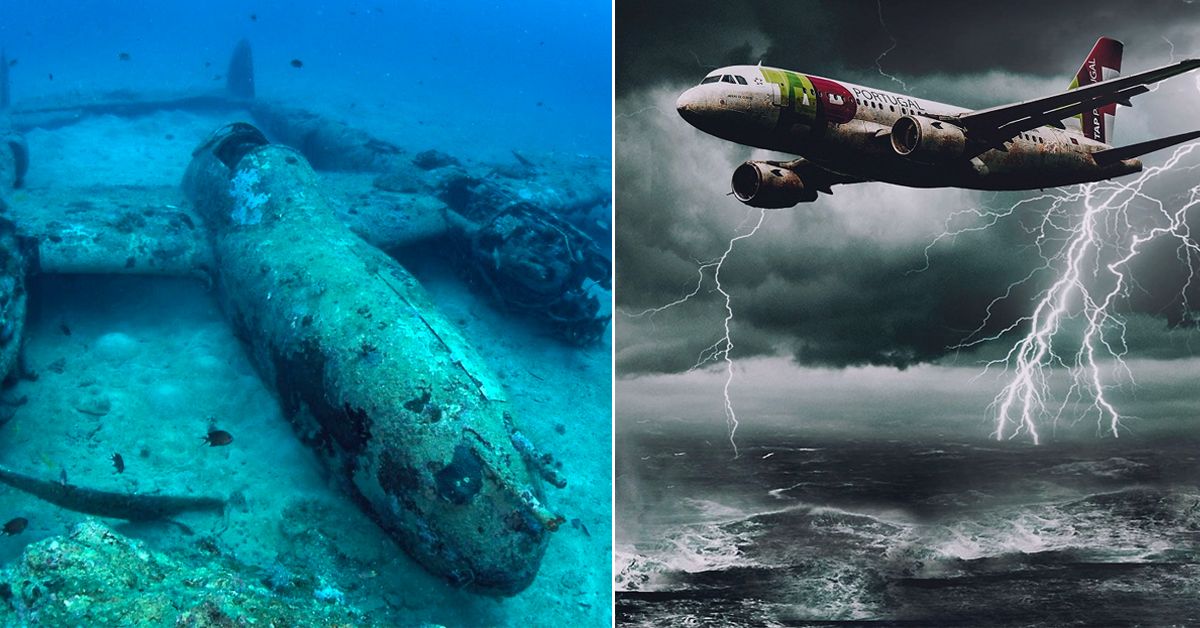The Bermuda Triangle, an area notorious for mysterious disappearances and strange occurrences, is home to one of aviation history’s most perplexing mysteries: the disappearance of Flight 19. On December 5, 1945, five U.S. Navy TBM Avenger torpedo bombers vanished without a trace during a routine training mission over the Atlantic Ocean, leaving behind more questions than answers. Despite exhaustive searches, no definitive explanation has ever been provided, making it one of the Bermuda Triangle’s darkest and most enduring secrets.

The Fateful Mission
Flight 19 was part of a standard navigation and bombing exercise that was supposed to last only a few hours. The planes, led by experienced flight instructor Lieutenant Charles Taylor, departed from the U.S. Naval Air Station in Fort Lauderdale, Florida. The mission was straightforward: fly east to practice bombing runs, then head north and return to base. However, after completing the first phase of the mission, things began to go horribly wrong.
The Disappearance
Shortly after completing their bombing exercises, Lieutenant Taylor radioed back to base, reporting that the squadron had become disoriented. The crew believed their compasses were malfunctioning, causing them to lose their bearings. Taylor’s transmissions grew increasingly panicked, as the planes appeared to be flying further away from land.
Despite efforts from ground control to help them recalibrate their position, the pilots of Flight 19 seemed unable to regain their bearings. One by one, their communications grew faint until they eventually disappeared completely. Search and rescue efforts were launched almost immediately, including the deployment of a Martin Mariner rescue plane, but shockingly, the rescue plane also vanished shortly after takeoff, adding to the mystery.

Theories Behind the Disappearance
Since that day in 1945, countless theories have emerged in an attempt to explain the disappearance of Flight 19. These range from logical scientific explanations to far more supernatural and speculative ideas.
-
Navigational Error: One of the most plausible theories is that a combination of human error and faulty equipment caused Flight 19 to become hopelessly lost. Lieutenant Taylor, unfamiliar with the local topography and confused by what he believed were faulty compasses, may have led his squadron in the wrong direction, flying out to sea instead of back toward land. The planes likely ran out of fuel and crashed into the ocean, sinking into the depths.
-
Magnetic Anomalies: Some researchers believe that the Bermuda Triangle is a hotspot for magnetic anomalies that interfere with navigational instruments, causing pilots and captains to lose their way. The region’s unusual magnetic field could have caused the compasses on Flight 19 to malfunction, leading to the squadron’s disorientation.
-
Supernatural Theories: The mystery surrounding Flight 19 has fueled a number of supernatural theories over the decades. Some believe that the Bermuda Triangle is home to extraterrestrial activity, with the aircraft being “abducted” by alien forces. Others suggest that the region is a portal to another dimension, explaining why planes and ships sometimes disappear without a trace.

-
Weather Phenomena: Sudden, violent storms are not uncommon in the Bermuda Triangle, and some speculate that an unexpected weather event could have disoriented the pilots of Flight 19 and caused them to crash. “Rogue waves” and sudden downdrafts have been suggested as potential natural causes for the planes’ disappearance.
-
Government Cover-Up: Another theory posits that the disappearance of Flight 19 was the result of a secret military experiment gone wrong, possibly related to radar testing or even early nuclear experiments. Proponents of this theory suggest that the U.S. government covered up the true nature of the mission and its outcome.
Search Efforts and Modern Technology
In the years following the disappearance of Flight 19, the U.S. Navy and other organizations conducted numerous search operations, but no wreckage or bodies were ever found. The depth and vastness of the ocean in the Bermuda Triangle make it difficult to conduct thorough searches, and over time, the wreckage would have likely been scattered or buried under layers of sediment.

In recent years, advances in sonar technology and deep-sea exploration have reignited efforts to find the lost planes. Several expeditions have uncovered wreckage from World War II-era aircraft in the area, but none have been definitively linked to Flight 19. Despite modern technology, the final resting place of Flight 19 remains elusive, keeping the mystery alive.
The Legacy of Flight 19
The disappearance of Flight 19 is perhaps the most iconic incident associated with the Bermuda Triangle, cementing the region’s reputation as a place where the inexplicable happens. It has been the subject of countless books, documentaries, and conspiracy theories, with each new generation of researchers trying to unlock the mystery.
For the families of the 14 men who disappeared, the search for answers continues. Although the official Navy report concluded that the squadron likely became disoriented and crashed into the ocean, the lack of physical evidence has left room for speculation and doubt.
Conclusion
The disappearance of Flight 19 remains one of the most baffling mysteries in aviation history. Decades after the planes vanished, the Bermuda Triangle continues to capture the imaginations of those seeking to understand the unknown. Whether the explanation lies in navigational errors, environmental factors, or something far more mysterious, the enigma of Flight 19 ensures that the Bermuda Triangle’s darkest secret endures.





